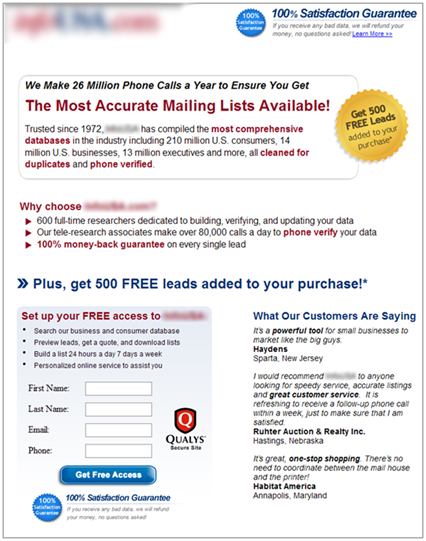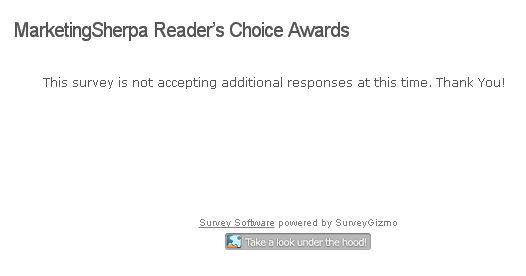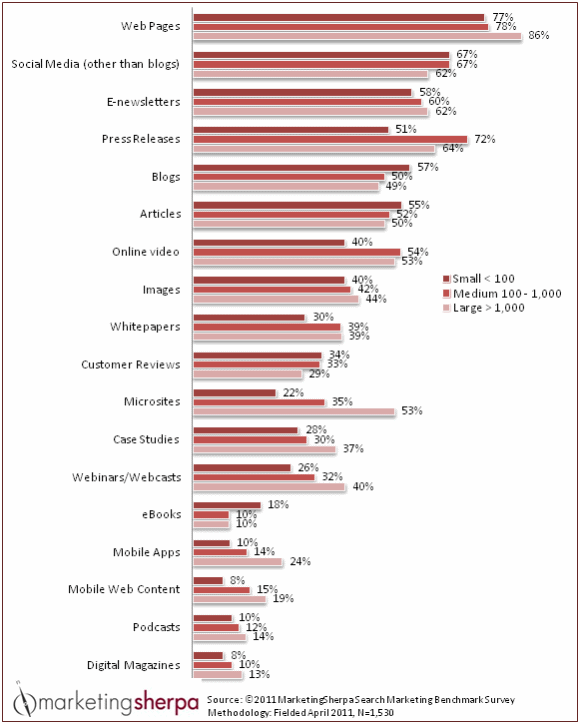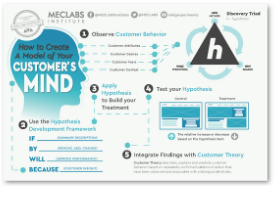Lead Capture Optimized: 201% increase in captured leads with clearer value proposition
Originally published on B2B LeadBlog
I just arrived at the Pre-Optimization Summit workshop in Denver and caught the end of Dr. Flint McGlaughlin’s Value Proposition Session.
In this Landing Page Optimization Workshop, Dr. McGlaughlin, Managing Director, MECLABS, taught the live audience here at the Denver Marriott Tech Center about a simple case study drawn from the MarketingExperiments research library.
In the case study, Dr. McGlaughlin revealed how one company clarified the value proposition of a landing page for a 201% increase in captured leads.
Here are the details of that case study:
The Background:
The company in the case study was a B2B company (anonymized for its protection) selling data and mailing lists to other businesses. The goal of the page was to capture a lead.
The Control:
Here’s a screenshot of the control.
The Treatment:
Here is a screenshot of the competing treatment.
The Results:
And here are the results.
The winning treatment generated a 201% increase in captured leads by clarifying the value proposition of the page.
So, how can you, a B2B marketer, replicate the success of this case study? Throughout his presentation, Dr. McGlaughlin drew out some principles we could apply to our own pages.
PRINCIPLE #1: Frame your value proposition with customer logic
The first principle Dr. McGlaughlin mentioned is this:
“The value proposition must be framed with customer logic rather than company logic.”
The primary question we must answer to determine the value proposition of a page is in the first person: “If I am the ideal customer, why should I purchase from you rather than any of your competitors?”
By answering this question in the first person, we are able to view the message through the customer’s eyes. This is helpful because we most often view the message through our own “marketing” eyes.
PRINCIPLE #2: Determine the necessary derivative value propositions
“Customer logic demands an obvious connection between the company, its various products and its different prospects.”
While your company likely has a primary value proposition, your landing page may not be the best place for it. A landing page may have its own value proposition, while a PPC (pay-per-click) ad may have another one. All of these, however, are derived from the primary value proposition.
Dr. McGlaughlin grouped these derivative value propositions into four main categories:
- Primary Level: the overall value proposition of a company
- Product Level: the value proposition of an individual product
- Prospect Level: the value proposition for an individual prospect type
- Process Level: the value proposition for a specific step in a process
PRINCIPLE #3: Map the micro-yes pathway for each product- and prospect-level value proposition
“For every product value prop, and for every prospect value prop, there is a micro-yes pathway up the side of the inverted funnel.”
When you are determining the product- or prospect-level value proposition, you must understand that your customer must make a series of micro-yeses before you can get to the ultimate yes, which is the conversion you are after. These yeses occur on the side of an imaginary inverted funnel.
To effectively communicate the value proposition on our lead capture pages, we must be able to map every micro-yes on the inverted funnel.
PRINCIPLE #4: Use the process-level value proposition to achieve each micro-yes
“For every micro-yes pathway there are a series of process-level value props.”
The last principle Dr. McGlaughlin mentioned ties everything together. To achieve the necessary series of micro-yeses, you must use process-level value propositions at each step.
In other words, every step in the process must answer this critical question:
“If I am the ideal customer, why should I take this next step rather than end the process?”
Related Resources:
Customer Value: The 4 essential levels of value propositions
How to Test Your Value Proposition Using a PPC Ad





















